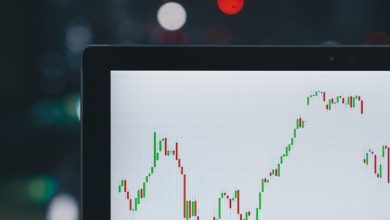The Impact of Institutional Adoption on Crypto Market Trends

- Understanding Institutional Adoption in the Crypto Market
- How Institutional Investors are Shaping Crypto Market Trends
- The Influence of Institutions on Cryptocurrency Prices
- Analyzing the Impact of Institutional Investors on the Crypto Market
- The Role of Institutions in Driving Crypto Market Volatility
- Exploring the Relationship Between Institutional Adoption and Crypto Market Behavior
Understanding Institutional Adoption in the Crypto Market
Institutional adoption in the crypto market has been a significant driver of trends in recent years. As more traditional financial institutions and large corporations have started to invest in and utilize cryptocurrencies, the market dynamics have shifted. This shift has led to increased liquidity, stability, and legitimacy for digital assets.
One key aspect of institutional adoption is the entry of institutional investors into the crypto space. These investors, such as hedge funds, family offices, and pension funds, bring with them significant capital and expertise. Their presence in the market has increased trading volumes and reduced price volatility, making cryptocurrencies a more attractive investment option for retail investors.
Another important factor in institutional adoption is the development of crypto-related financial products and services. For example, the introduction of bitcoin futures contracts on major exchanges has provided institutional investors with new ways to gain exposure to the crypto market without directly holding the underlying assets. This has further legitimized cryptocurrencies as an asset class and attracted more institutional interest.
Regulatory developments have also played a role in institutional adoption. As governments around the world have started to create clear legal frameworks for cryptocurrencies, institutional investors have gained more confidence in the market. Regulatory clarity has reduced the risk of legal issues and helped institutions feel more comfortable investing in digital assets.
In conclusion, institutional adoption has had a profound impact on crypto market trends. It has brought in new capital, increased market stability, and improved the overall legitimacy of cryptocurrencies. As more institutions continue to enter the market, we can expect further growth and maturation in the crypto space.
How Institutional Investors are Shaping Crypto Market Trends
Institutional investors play a crucial role in shaping trends within the crypto market. As large financial organizations, pension funds, and hedge funds increasingly enter the crypto space, their actions have a significant impact on the market as a whole. These investors bring a level of legitimacy and stability to the market that was previously lacking, attracting more traditional investors to cryptocurrencies.
One way institutional investors influence crypto market trends is through their investment decisions. When these investors allocate a portion of their portfolios to digital assets, it can lead to significant price movements in the market. Additionally, their participation can help establish support levels for various cryptocurrencies, providing a sense of security for other investors.
Furthermore, institutional investors often engage in over-the-counter (OTC) trading, which can have a substantial effect on market liquidity and pricing. By conducting large trades outside of traditional exchanges, these investors can impact the supply and demand dynamics of specific cryptocurrencies, leading to price fluctuations.
Another way institutional investors shape crypto market trends is through their involvement in regulatory discussions and developments. As major players in the financial industry, their opinions and actions regarding regulation can influence how governments and regulatory bodies approach cryptocurrencies. This, in turn, can impact market sentiment and the overall direction of the crypto market.
The Influence of Institutions on Cryptocurrency Prices
When it comes to the cryptocurrency market, institutions play a significant role in influencing prices. The adoption of cryptocurrencies by institutional investors can have a major impact on market trends. Institutions like hedge funds, investment banks, and asset management firms have the power to move large amounts of capital, which can cause significant fluctuations in cryptocurrency prices.
One of the main ways in which institutions influence cryptocurrency prices is through their buying and selling activities. When institutions buy large amounts of a particular cryptocurrency, it can drive up the price due to increased demand. Conversely, when institutions sell off their holdings, it can lead to a decrease in price as supply outweighs demand.
Moreover, the entry of institutions into the cryptocurrency market can also bring a sense of legitimacy and stability. This increased credibility can attract more retail investors, further driving up prices. On the other hand, negative news or actions from institutions can have the opposite effect, causing prices to plummet.
Overall, it is clear that institutions have a significant influence on cryptocurrency prices. As institutional adoption of cryptocurrencies continues to grow, it is important for investors to closely monitor institutional activity to anticipate market trends and make informed decisions.
Analyzing the Impact of Institutional Investors on the Crypto Market
When analyzing the impact of institutional investors on the cryptocurrency market, it is essential to consider how their entry has influenced market trends and overall sentiment. Institutional investors, such as hedge funds, asset managers, and pension funds, have started to allocate a portion of their portfolios to cryptocurrencies like Bitcoin and Ethereum. This shift in investment strategy has had a profound effect on the market dynamics and has contributed to increased liquidity and price stability.
One of the key ways in which institutional adoption has impacted the crypto market is through increased trading volume. Institutional investors typically trade in large volumes, which can lead to significant price movements in the market. This surge in trading activity has brought more attention to cryptocurrencies from retail investors and has helped to legitimize the asset class in the eyes of traditional financial institutions.
Furthermore, institutional investors have also played a role in shaping regulatory developments in the crypto space. As more institutional players enter the market, there is a growing need for clear and consistent regulations to govern their activities. This has led to increased scrutiny from regulatory bodies and has prompted discussions around how best to regulate the burgeoning industry.
The Role of Institutions in Driving Crypto Market Volatility
Institutions play a crucial role in driving volatility in the cryptocurrency market. The influx of institutional investors has brought both stability and unpredictability to the market. This is due to the large trading volumes that institutions are capable of, which can cause rapid price fluctuations.
Institutions can also influence market sentiment through their actions, such as buying or selling large amounts of crypto assets. This can create a domino effect, leading to panic selling or FOMO (fear of missing out) buying among retail investors. The actions of institutions can amplify market trends, leading to heightened volatility.
Moreover, institutions often have access to sophisticated trading tools and strategies that can exacerbate market movements. High-frequency trading, algorithmic trading, and options trading are just a few examples of strategies that institutions use to capitalize on market volatility. These techniques can lead to sudden price swings that can catch retail investors off guard.
In conclusion, institutions are a driving force behind the volatility seen in the crypto market. Their actions and strategies can have a significant impact on market trends, leading to both opportunities and risks for retail investors. Understanding the role of institutions in driving market volatility is crucial for navigating the ever-changing landscape of the cryptocurrency market.
Exploring the Relationship Between Institutional Adoption and Crypto Market Behavior
Examining the correlation between institutional adoption and crypto market behavior reveals fascinating insights into the dynamics of the digital asset space. Institutional players, such as hedge funds and corporations, have been increasingly stepping into the crypto market, influencing trends and price movements.
As institutions pour capital into cryptocurrencies, the market experiences greater liquidity and reduced volatility. This injection of institutional funds can lead to more stable price trends and increased market efficiency. Moreover, the involvement of institutions can signal to retail investors and the broader market that digital assets are gaining legitimacy and becoming a mainstream investment option.
However, it is essential to note that institutional adoption can also introduce new risks and challenges to the crypto market. Large institutional trades have the potential to cause significant price swings, impacting both short-term traders and long-term investors. Additionally, the actions of institutions can sometimes lead to market manipulation or insider trading concerns, highlighting the need for regulatory oversight and transparency in the industry.






